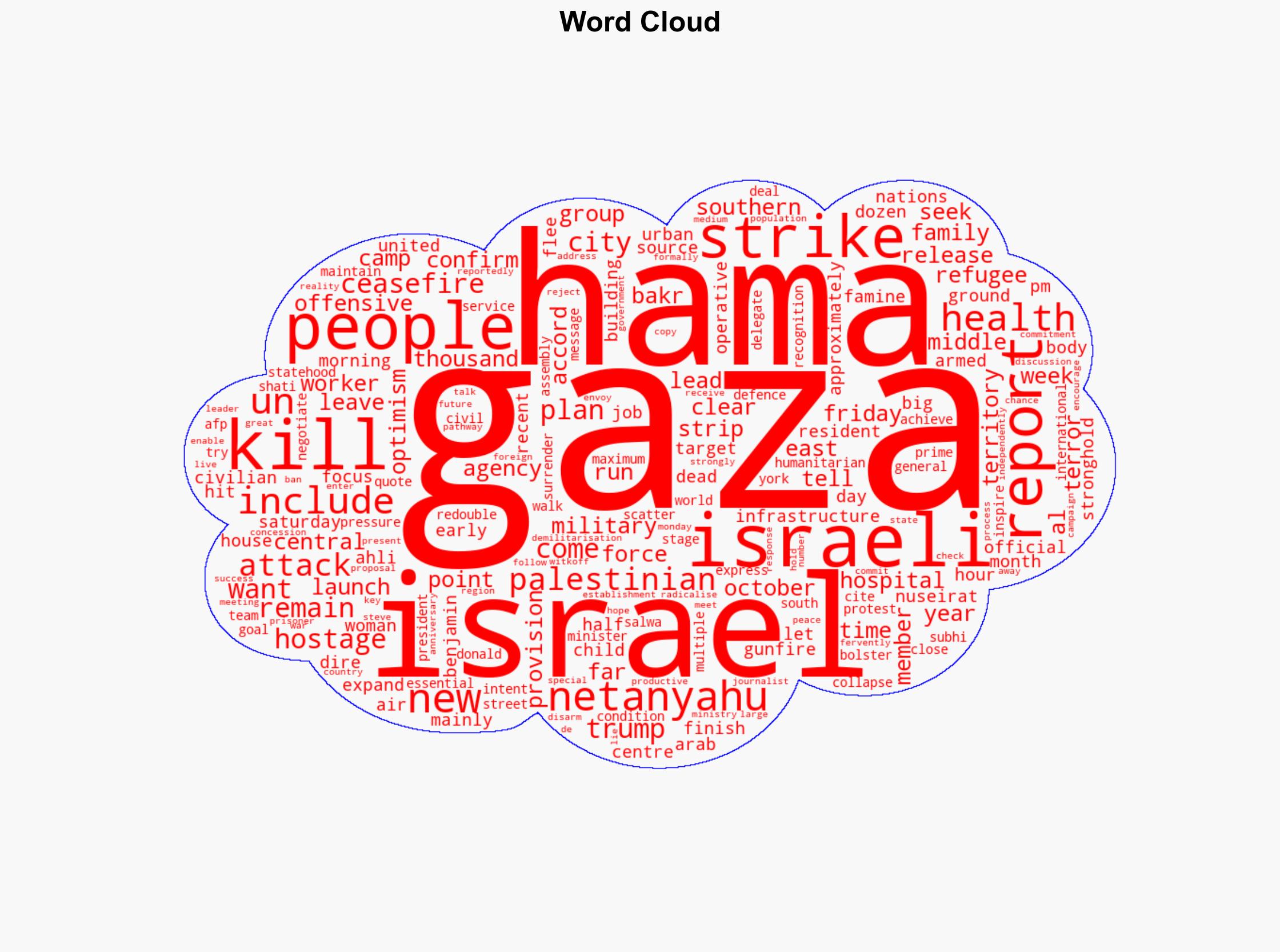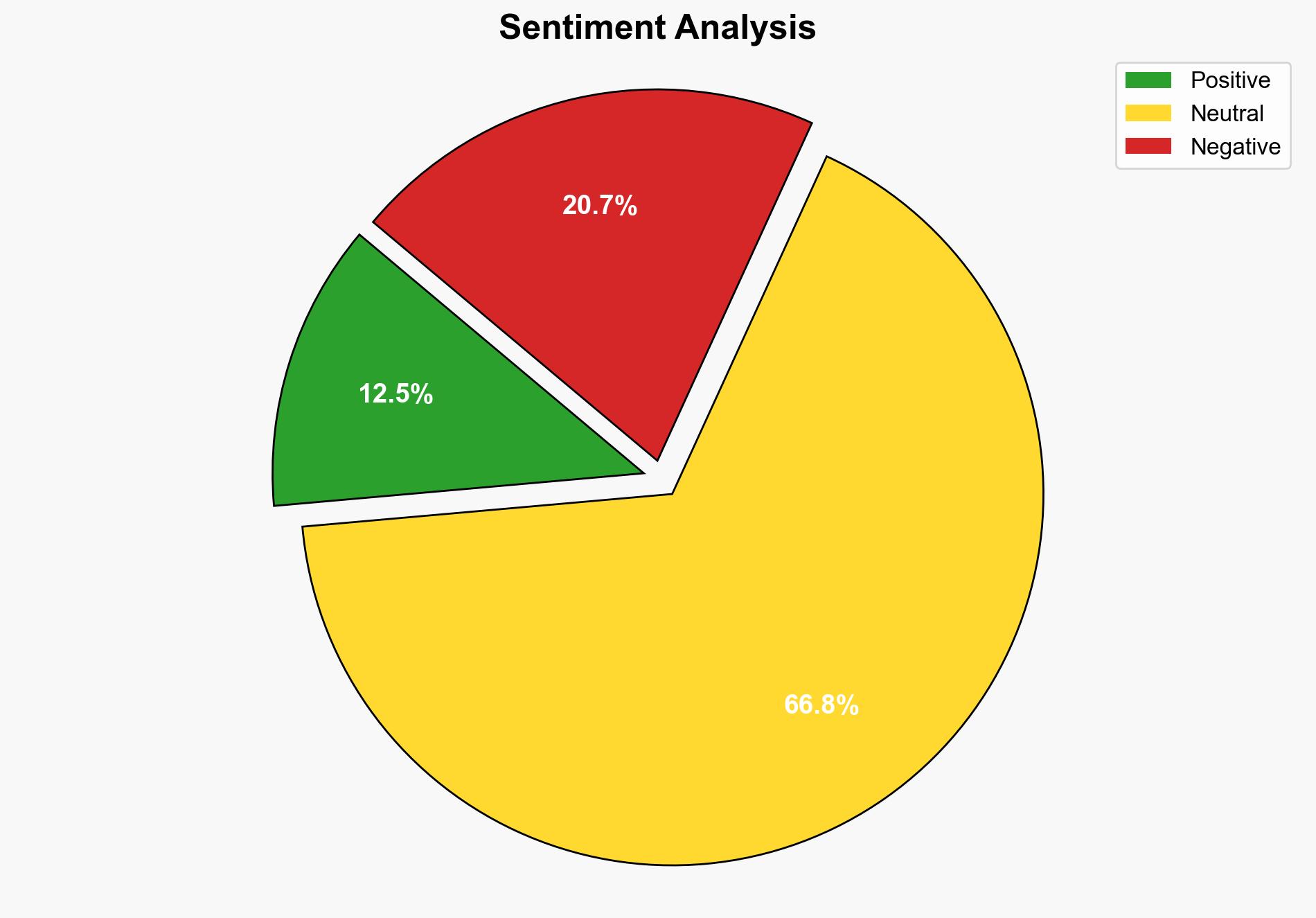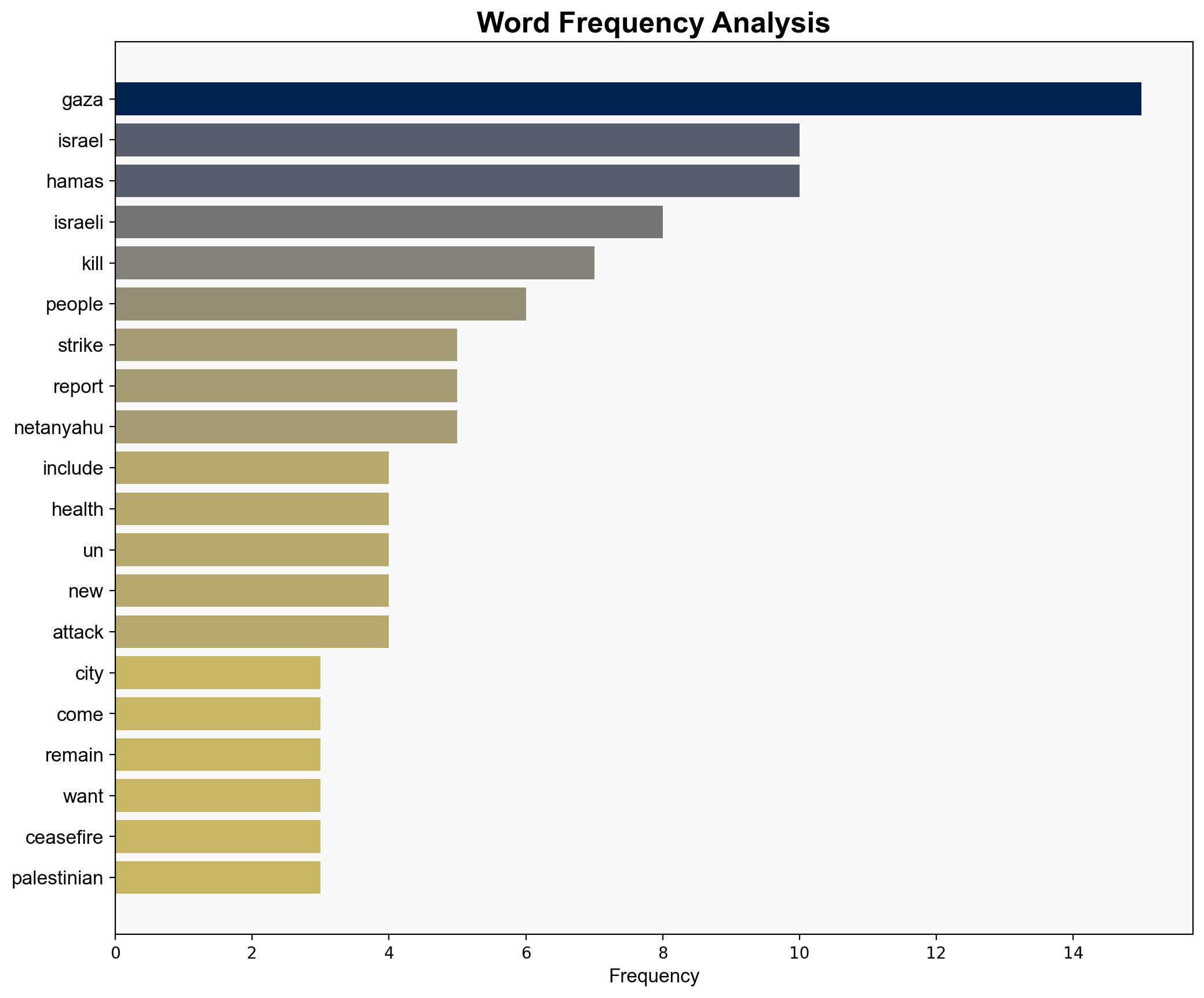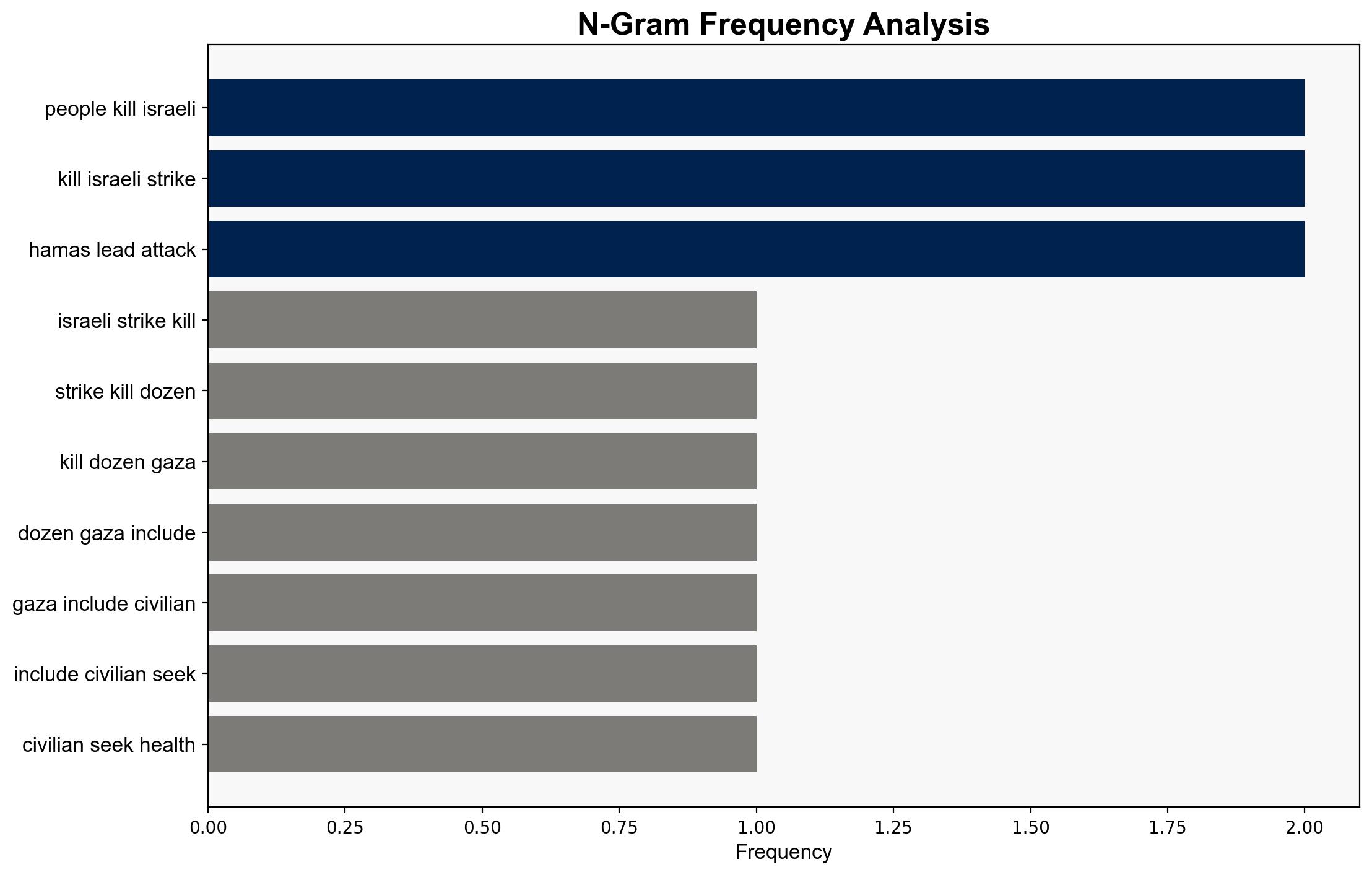Israeli strikes kill dozens in Gaza including civilians seeking aid health workers say – BBC News
Published on: 2025-09-27
Intelligence Report: Israeli strikes kill dozens in Gaza including civilians seeking aid health workers say – BBC News
1. BLUF (Bottom Line Up Front)
The most supported hypothesis is that the Israeli military strikes are part of a strategic effort to dismantle Hamas infrastructure in Gaza, despite significant civilian casualties. Confidence in this hypothesis is moderate due to conflicting reports and limited independent verification. Recommended action includes diplomatic engagement to address humanitarian concerns and explore ceasefire opportunities.
2. Competing Hypotheses
Hypothesis 1: The Israeli strikes are primarily aimed at dismantling Hamas military capabilities, with civilian casualties being an unintended consequence of targeting densely populated areas.
Hypothesis 2: The strikes are intended to exert maximum pressure on Hamas by targeting both military and civilian infrastructure, aiming to force a surrender or significant concession from Hamas.
3. Key Assumptions and Red Flags
Assumptions:
– Hypothesis 1 assumes that Israel’s primary goal is military, not civilian, and that civilian casualties are collateral damage.
– Hypothesis 2 assumes a broader strategic aim to weaken Hamas through civilian pressure.
Red Flags:
– Lack of independent verification due to restricted access to Gaza.
– Potential bias in reports from both Israeli and Hamas-controlled sources.
– Inconsistencies in casualty figures and target descriptions.
4. Implications and Strategic Risks
– Continued strikes risk escalating into broader regional conflict, drawing in neighboring states or non-state actors.
– Humanitarian crisis in Gaza could lead to increased international pressure on Israel.
– Potential for retaliatory actions by Hamas or allied groups, increasing regional instability.
– Economic impacts from prolonged conflict could affect regional and global markets.
5. Recommendations and Outlook
- Engage in diplomatic efforts to establish a ceasefire and facilitate humanitarian aid delivery.
- Monitor for signs of escalation or de-escalation, adjusting strategies accordingly.
- Scenario Projections:
- Best Case: Ceasefire achieved, humanitarian aid flows, and negotiations resume.
- Worst Case: Full-scale regional conflict with significant civilian and military casualties.
- Most Likely: Continued strikes with intermittent diplomatic efforts and limited ceasefire agreements.
6. Key Individuals and Entities
– Benjamin Netanyahu
– Donald Trump
– Steve Witkoff
7. Thematic Tags
national security threats, regional focus, counter-terrorism, humanitarian crisis




